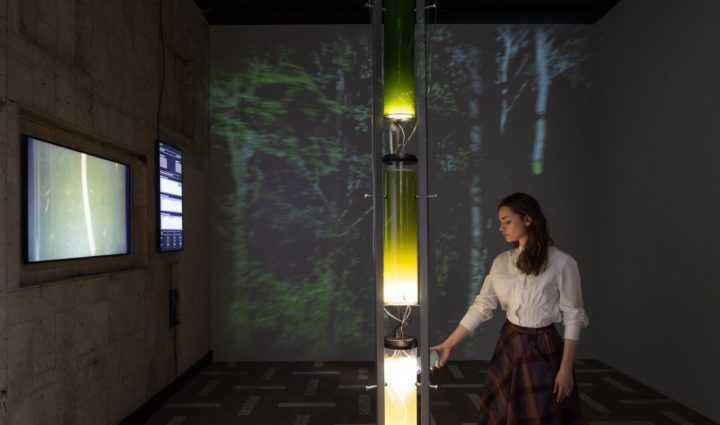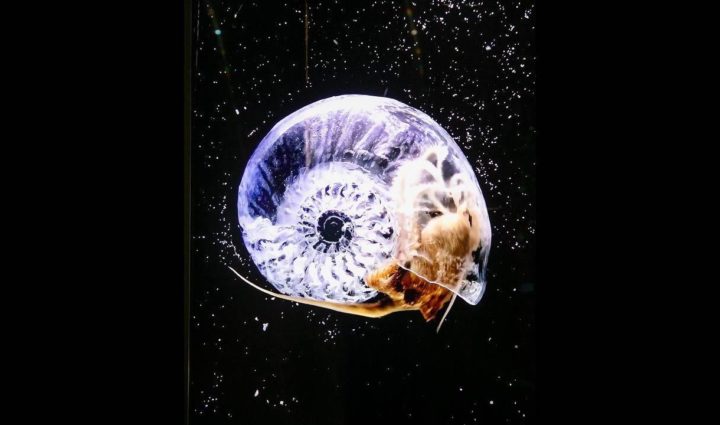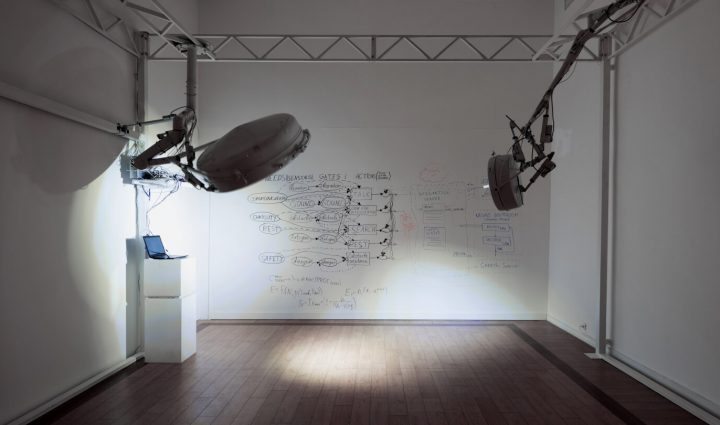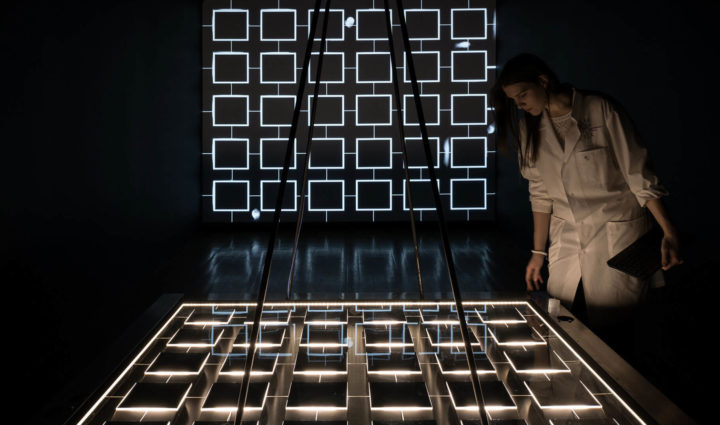On 12th of April, the Cosmonautics Day, in LABORATORIA Art&Science Space has been opened the “DUST” exhibition. All artworks are connected to dust of different kinds — cosmic, electronic, botanical and even physiological.
Object in focus of the exhibition is given in two notions: dust as a kind of “building material” from which the universe is born: space dust turns into stars and planets, pollen fertilises a flower and produces a seed of a new plant. Second notion is of dust as a metaphor of destruction, a sign of the past; the track of destruction of the material. But in any case, we are speaking about the life circulation.
In the framework of preparation of the exhbition, the discussion program was organised, in which took part astrophysicists, physicists, botanists. The scientists revealed the results of their “dust” work to the artists. These meetings have become the impulse for creation of new collaborative projects.
ARTWORKS
“Brain Dust” is an installation by Sergey Shutov, dedicated to phosphenes — figures, shining dots and images which become visible with closed eyes or stimulating the brain with special electrical device, looking inside oneself in the darkness, into the inner space.

Sergey Shutov
It is also possible to look outward, scrutinizing the day dust, the one left of the usual objects visible in the dispersed “natural” light. In the work “What the dust remembers about”, Alexei Blinov and Fedor Sofronov use special sensors installed on the brooms to give the visitors opportunity to hear in headphones what the dust particles can tell — saved moments of information, entwining into one global narration. Carrying this logic to the end, the art-group “Where the Dogs Run” from Ekaterinburg in their interactive work identify the visitors themselves to the “dust” and during the show will weigh and count the volume of this “dust” which has come to visit.

Alexei Blinov and Fedor Sofronov
Dust marks the flow of time, process of destruction and disappearance, represents the remains which appeal to our nostalgic feelings. In the work by Erwin Wurm, only the dust print is left from the object, and the absence itself is being presented to the attention of the public. Dust symbolizes the time after some moment, as if becoming the monument counting the time after interruption of life, just like the year rings of the tree count time from its beginning.

Natalya Egorova
This beginning preserved by dust is demonstrated by generative sound installation “Years” by Bartholomaeus Traubeck, where the wood cuts with year rings are being used as discs for a turntable. A video camera reading the rings turns the time into music, making available what the material object keeps inside.

Bartholomaeus Traubeck
In the work “Dust Serenade” by Dietmar Offenhuber, Markus Decker and Orkan Telhan, the sound waves are transforming the particles of street dust on their way, making them alive. This interactive installation is a reenactment of an acoustic experiment of XIX century performed by physicist August Kundt, which allowed him to measure the speed of sound in different gases.

Dietmar Offenhuber, Markus Decker and Orkan Telhan
The technological installation by Herwig Weiser “Zgodlocator” is translating the movements of dusty mesh into industrial sounds. Changing the tension of magnetic field, the spectator can manipulate the transformations and sounds of the substances. This object looks like a window to a phantasmagorical world where the mysterious landscapes appear and disappear. Music of the «dust» communicates messages about the life beyond abstract, whose code is not clear yet, whose message we can’t yet receive, but which penetrates everything.

Herwig Weiser
Archives and dust can’t be separated. This topic is being developed by the PROVMYZA group in the work “20.21”, a video representation of condensed and strictly structured time presented from the point of view of library visitor.
One might object that now, in “electronic age”, there is no more dust, but even in the most sterile digital space, the particles of information, pixels of knowledge, — all together are not more than dust and noise. This is what a videoinstallation by Vverkh! group is about, transforming random videos from Internet into the “dusty” digital landscapes. Each of them is a separate meaningful world, all together — a great “chaosmos”.
Austrian artists Christa Sommerer and Laurent Mignonneau, the pioneers of technological art, have created specially for the exhibition an interactive installation which turns the human speech into noise and smoke.
Dust may condense into some remains, contour, relief, which reminds about the human, as if the presence of the human is already indelible. Kiril Asse and Anna Ratafieva with use coal dust to make visible the seared architectural flesh, memory of the old decorative era.
And taking this reincarnation of the dust from past into present, Anatoly Osmolovsky will write with this fragile volatile substance the manifesto “true freedom in the most strict logic of development all the rest is arbitrary”. Aphorism of the current moment is intensity of the thought, which the artist living “here and now” was able to see.


























